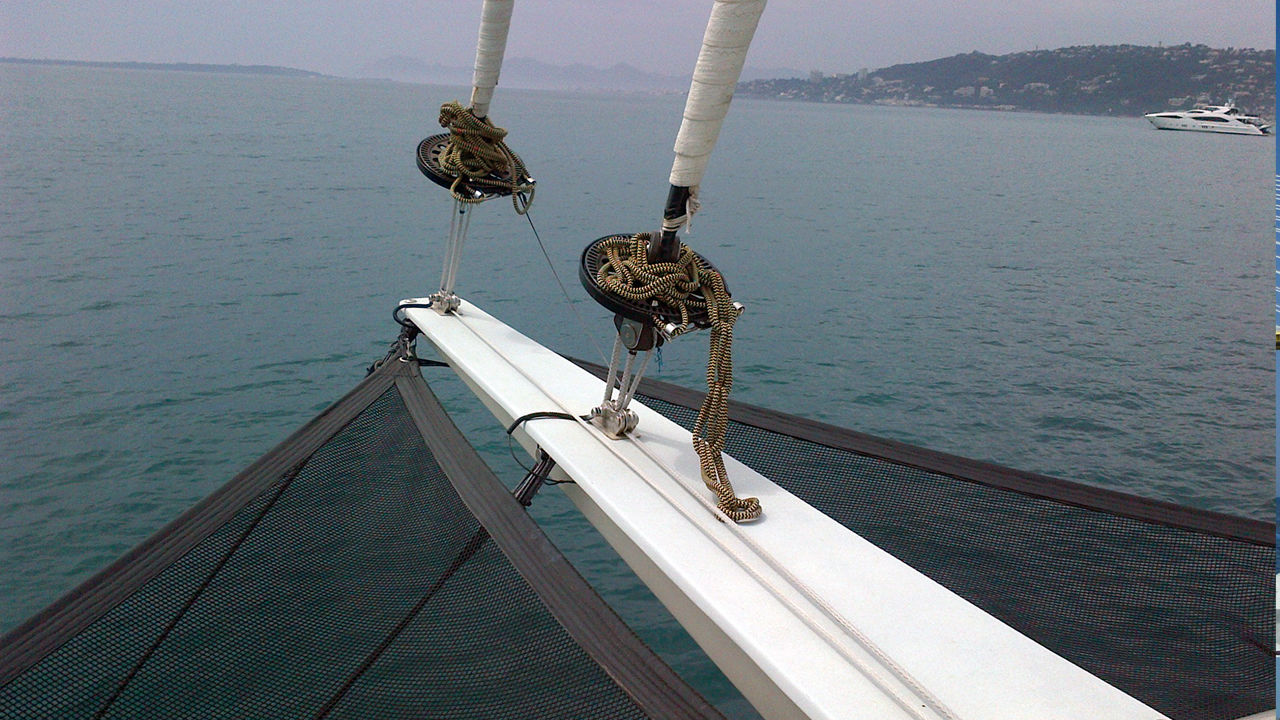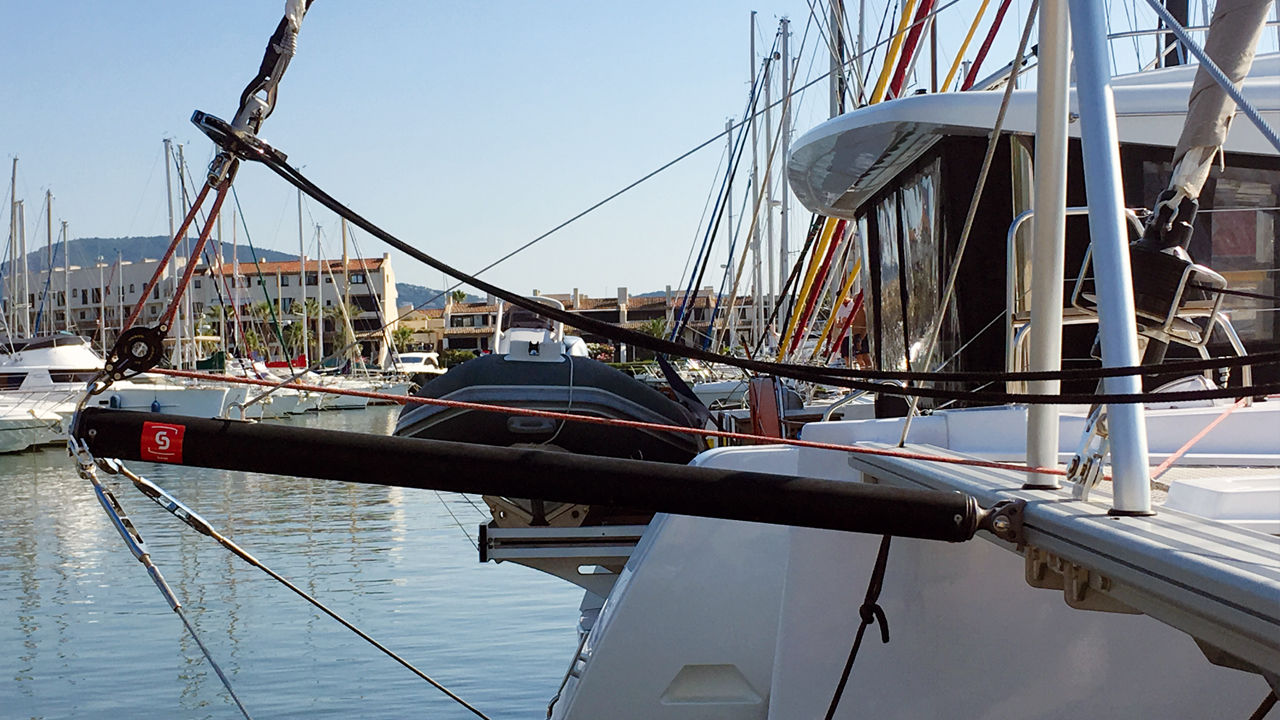
Issue #: 162
Published: November / December 2018
- Price per issue - digital : 6.20€Digital magazine
- Price per issue - print : 8.50€Print magazine
- Access to Multihulls World digital archives Digital archives
With modern sail plans, the bowsprit has become essential. But aboard our modern sailing boats, it can have several forms, and be in aluminum, carbon, pivoting, retractable… And fitting one on your boat - is it possible? Here is an analysis, so you will know everything about the bowsprit...
While they monopolized the bows of every ship at the end of the 19th and the beginning of the 20th century, this spar disappeared little by little as time went by, before returning in large numbers in the last twenty years. On our cruising multihulls, it reappeared at first aboard fast boats, where it allowed the center of effort of the headsails to be moved forward. But the geometry of recent sail plans justifies its use again on the most placid production cruisers. In general, genoas have lost much of their overlap, so as to make tacking easier. They have even sometimes become self-tacking. But even when the mast has been moved aft – as on certain very recent models – when sailing off the wind, on a broad or beam reach, they are no longer powerful enough. A gennaker or code D becomes essential, to keep up a good average speed. But if this powerful sail is rolled up just in front of the leading edge of the genoa (which is most often the case, remember we are on a cruising boat!) it greatly disrupts the air flow at the luff, drastically reducing the sail’s efficiency. And equally when the genoa is rolled up, it disrupts the gennaker. Finally, rolling these sails can be hampered if they are too close, not to mention during gybes when the chafing on the genoa can quite simply cause the maneuver to fail.

The simplest solution therefore consists of moving the tacks of these sails further apart, thanks to… a bowsprit. And the advantages are then numerous. Firstly, the area of the downwind sails can be increased especially as the foot is going to be longer. Then, the sails no longer get in each other’s way and the air flow is completely laminar. But we can also have them working together, which is very effective on a reach as it creates a venturi effect between the two. Finally, for points of sailing further off the wind, the bowsprit has the effect of distancing the leading edge of the asymmetric spinnaker and allows you to easily sail ten degrees further downwind, compared to a spinnaker attached to the forward crossbeam. You can thus easily sail at up to 150-155 degrees to the apparent wind. As for the maneuvers, the fluidity is much greater and the clearance between the sails avoids wrapping the spinnaker round the genoa. Thanks to the bowsprit and bigger, better-performing headsails, sailing downwind and/or in light breezes becomes fun and resorting to the engines is delayed.

Forward crossbeams in aluminum are reinforced with an internal module for the compression. You can therefore fit a bowsprit with no problems, as long as it remains of a reasonable size. For a 45-foot boat, an 80 to 100 cm bowsprit is the right ratio. The major manufacturers, such as Sparcraft, Selden, Soromap, offer bowsprits in kit form, with various sections in aluminum or carbon. For an 80 to 100 cm length, the section will be around 80 to 90 mm. Fitting it to the bow of a trimaran requires ...
What readers think
Post a comment
No comments to show.